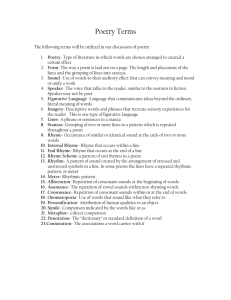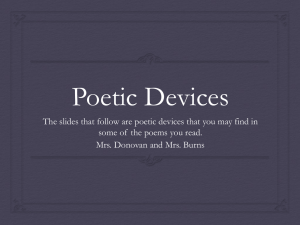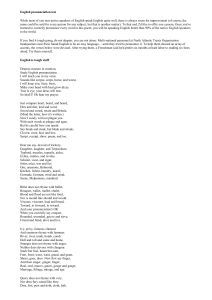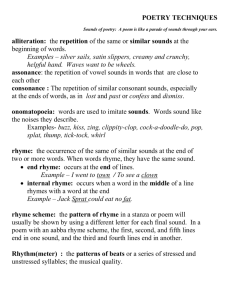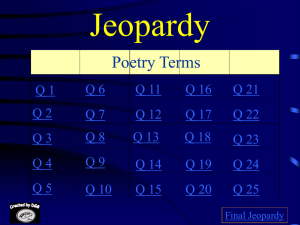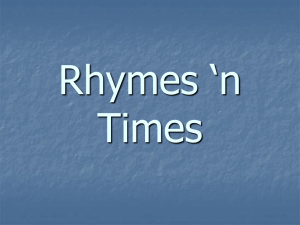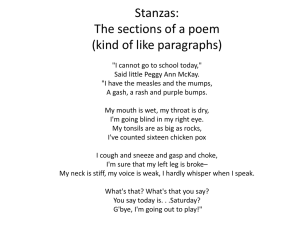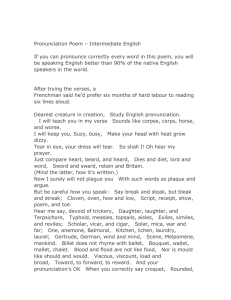Figurative Language Handout
advertisement
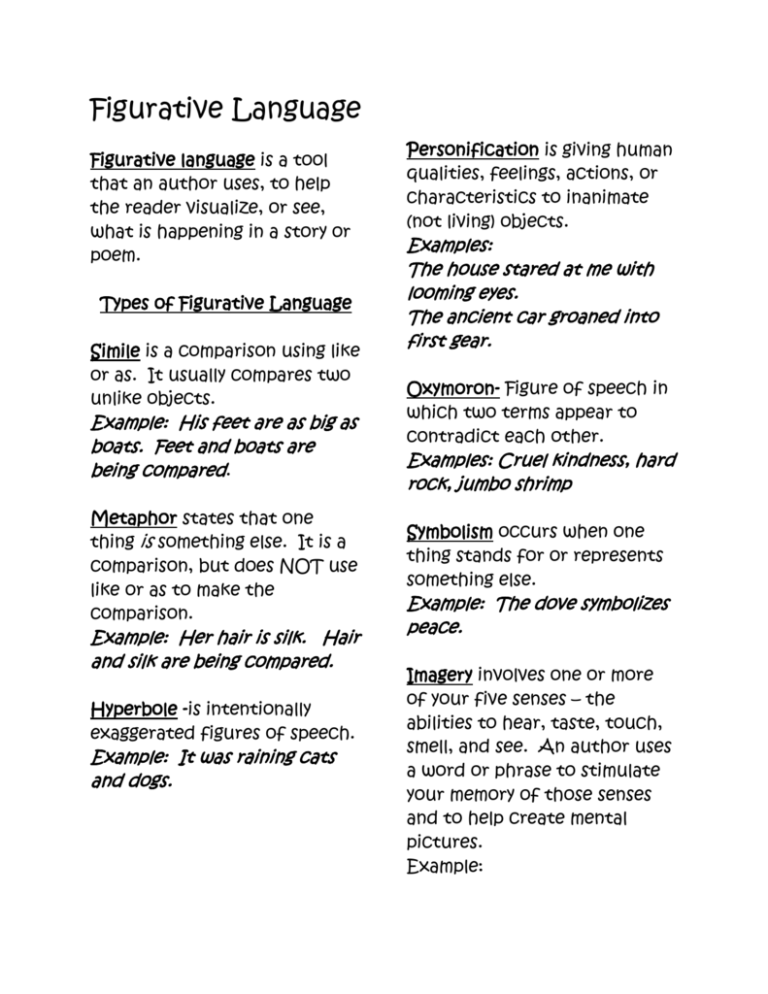
Figurative Language Figurative language is a tool that an author uses, to help the reader visualize, or see, what is happening in a story or poem. Types of Figurative Language Simile is a comparison using like or as. It usually compares two unlike objects. Example: His feet are as big as boats. Feet and boats are being compared. Metaphor states that one thing is something else. It is a comparison, but does NOT use like or as to make the comparison. Example: Her hair is silk. Hair and silk are being compared. Hyperbole -is intentionally exaggerated figures of speech. Example: It was raining cats and dogs. Personification is giving human qualities, feelings, actions, or characteristics to inanimate (not living) objects. Examples: The house stared at me with looming eyes. The ancient car groaned into first gear. Oxymoron- Figure of speech in which two terms appear to contradict each other. Examples: Cruel kindness, hard rock, jumbo shrimp Symbolism occurs when one thing stands for or represents something else. Example: The dove symbolizes peace. Imagery involves one or more of your five senses – the abilities to hear, taste, touch, smell, and see. An author uses a word or phrase to stimulate your memory of those senses and to help create mental pictures. Example: Idioms An expression that means something other than the literal meanings of its individual words. They are overused expressions. Example: Put a lid on it. It’s raining cats and dogs. Sound Devices: Techniques used to create as sense of rhythm or to emphasize particular sounds in writing. Alliteration is the repetition of the initial consonant. There should be at least two repetitions in a row. Example: Peter Piper picked a peck of pickled peppers. The first letter, p, is a consonant. Its sound is repeated many times. Assonance: The repetition of internal vowel sounds. Doesn’t have to rhyme. Example: Princess Kitty will Kiss Timmy T. Tipper’s lips. Consonance- When consonants repeat in the middle or end of words. Example: I dropped the locket in thick black mud. He struck a streak of bad luck. Onomatopoeia is the imitation of natural sounds in word form. These words help us form mental pictures, or visualize, things, people, or places that are described. Sometimes a word names a thing or action by copying the sound. Example: Bong! Hiss Buzz! Repetition: Repeating a word or words for effect. Example: I’m nobody! Who are you? Are you nobody too? Then there’s a pair of us-don’t tell! They’d banish us you know. ~ Emily Dickinson Rhythm- When words are arranged in such a way that they make a pattern or beat. The pattern of stressed and unstressed syllables in spoken or written language. Rhyme Scheme- The sequence in which the rhyme occurs. The first end sound is represented as the letter a, the second b, etc. Example: Twinkle, twinkle little star A How I wonder what you are A Up above the world so high B Like a diamond in the sky B Rhyme- When words have the same end sound. This happens at the beginning, end, or middle of lines. Example: Car, star, far, tar Exact Rhyme- Also known as perfect rhyme. Two words rhyme in such a way that their final stressed vowel and all following sounds are identical Example: sight and light, right and might, rose and does. Half Rhyme- Also known as slant rhyme, imperfect rhyme, or near rhyme. Words that do not rhyme exactly but have a similar sound. Examples: park and cart, pans and hams End Rhyme- Rhyme that occurs at the end of lines Internal Rhyme- Rhyme that occurs within a single line of poetry. Example:The car seems so far from the star Stanzas- A group of lines in a poem set off by blank lines. Similar to a paragraph found in prose. Refrain- Stanza or line that is repeated throughout the poem. Connotation- The ideas and feelings associated with the word as opposed to its dictionary meaning. Denotation- The dictionary and literal meaning of a word ADDITIONA L NOTES:
